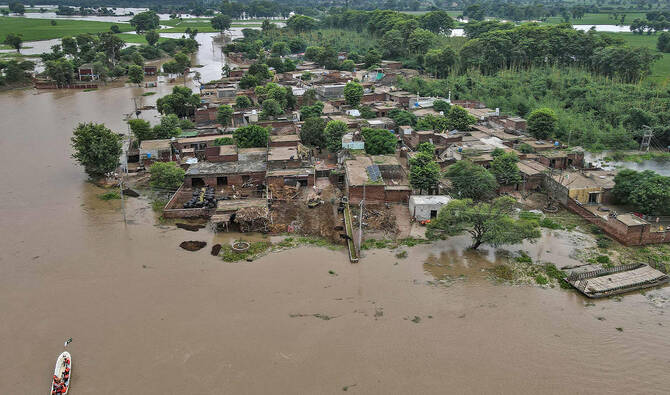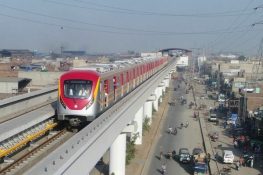Rivers Overflow After Torrential Monsoon Rains
Severe flooding in Pakistan’s Punjab province has wreaked havoc, affecting at least 72 villages across seven districts. Authorities confirmed that the Sutlej, Chenab, and Ravi rivers have swelled to dangerous levels following days of heavy monsoon rainfall, forcing thousands of residents to flee their homes.
At Head Ganda Singh on the Sutlej River, water levels surged to 23 feet, breaching embankments at several points, including Bari Peer. The flooding submerged entire villages, inundating homes, farmlands, and infrastructure. Families have been forced to take shelter under open skies after losing their houses and belongings.
Thousands Evacuated in Emergency Operations
According to Punjab’s Provincial Disaster Management Authority (PDMA) and the National Disaster Management Authority (NDMA), coordinated rescue and relief operations are underway. The army, Rescue 1122 teams, local police, and district administrations have been deployed to assist flood victims.
So far, officials report that more than 5,100 people and 1,700 livestock have been safely relocated to higher ground. Relief camps have been established in affected areas, providing food, medical support, and temporary shelters.
Despite these efforts, many communities remain stranded, as rising waters cut off access to remote villages. Helicopters and boats are being used to reach isolated families.
Rainfall Records Broken in Sialkot
In Sialkot district, authorities confirmed that the region recorded its heaviest rainfall in over 11 years. The downpour overwhelmed local drainage systems, causing urban flooding and prompting officials to issue a high alert.
The Chenab River is experiencing dangerous surges at Marala and Khanki, while the Ravi River remains at risk of overflowing at Shahdara and Jassar. Authorities warn that continued heavy rains in upstream areas of India could further worsen the situation.
Prime Minister Orders Continuous Monitoring
Prime Minister Shehbaz Sharif has directed the NDMA to remain on high alert and maintain round-the-clock operations. He instructed provincial authorities to ensure the immediate evacuation of communities living near riverbanks.
Officials say flood forecasts are being updated hourly, with disaster response teams stationed across vulnerable zones. Citizens are urged to move to designated safe areas without delay.
Humanitarian and Agricultural Losses Mount
The floods have not only endangered lives but also inflicted heavy damage on agriculture, a backbone of Punjab’s economy. Vast tracts of farmland have been submerged, destroying standing crops and threatening food supplies in one of Pakistan’s most fertile regions.
Basic infrastructure, including roads, bridges, and electricity networks, has also been damaged. Experts warn that rebuilding efforts will be costly and time-consuming, especially for rural communities already struggling with inflation and economic hardship.
Widespread Flood Risk Across South Asia
South Asia remains one of the most flood-prone regions in the world. According to the United Nations Office for Disaster Risk Reduction, seasonal floods affect millions each year in Pakistan, India, Bangladesh, and Nepal.
Pakistan in particular has faced repeated devastation. In 2022, catastrophic floods submerged one-third of the country, killing more than 1,700 people and displacing over 33 million. The disaster caused an estimated $30 billion in damages and highlighted the urgent need for climate resilience.
Experts warn that climate change is increasing the frequency and intensity of extreme weather events in the region. Rising global temperatures are accelerating glacial melt in the Himalayas, while erratic monsoon patterns are leading to both droughts and destructive floods.
Relief Camps Offer Temporary Hope
In Punjab, relief camps are operating around the clock, distributing food rations, clean drinking water, and medical aid. However, aid workers warn of possible outbreaks of waterborne diseases, such as cholera and diarrhea, due to contaminated floodwaters.
For now, thousands of displaced families remain in limbo, unsure when — or if — they will be able to return home. With floodwaters still rising in some areas, the scale of damage may only become clear in the coming weeks.
A Crisis Far From Over
While rescue teams continue their operations, officials emphasize that the crisis is far from over. The situation along the Sutlej, Chenab, and Ravi rivers remains precarious, and further rain could trigger new surges.
For the residents of Punjab, the monsoon has once again brought both life-sustaining rains and devastating floods. As Pakistan grapples with the growing challenges of climate change, the human cost of these disasters continues to rise.















